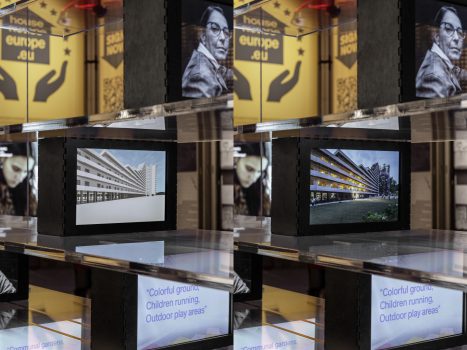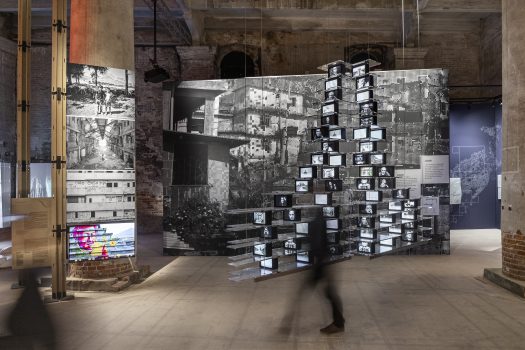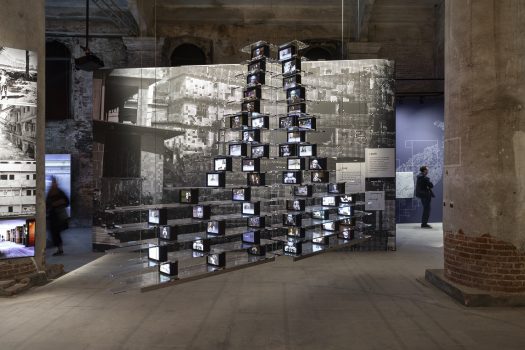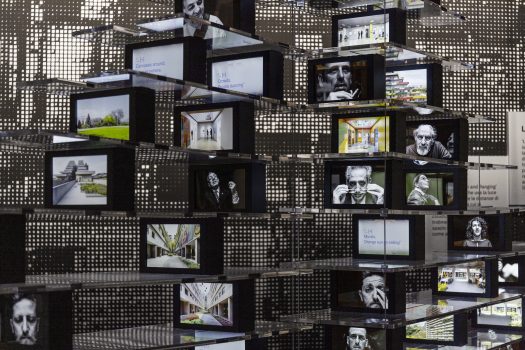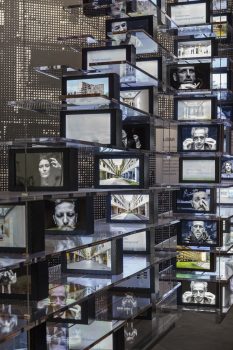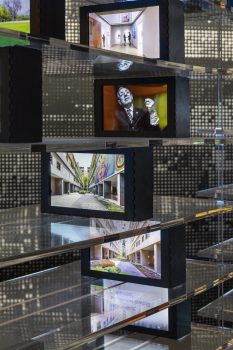International design and innovation firm CRA–Carlo Ratti Associati, in collaboration with the Municipality of Naples, has launched a participatory design project to reimagine Le Vele — the iconic modernist housing complex in southern Italy. Blending community voices with AI, the initiative translates residents’ memories and ideas into visual blueprints for the future. First presented at the 19th International Architecture Exhibition of La Biennale di Venezia, “Intelligens. Natural. Artificial. Collective,” the project is currently ongoing.
Designed in the late 1960s by architect Franz Di Salvo, Le Vele (“The Sails”) envisioned a new kind of collective housing — one of elevated walkways and shared terraces inspired by Naples’ historic urban fabric. But modernist idealism met messy reality. Over time, the complex became a container for displacement and marginalization. Some of its international peers, such as Pruitt-Igoe in St. Louis and Robin Hood Gardens in London, were demolished in full. Conversely, part of the Vele – particularly the intact Vela Celeste – has been preserved and is being reimagined through community-led renewal.
In addition to traditional participatory architecture, the project leverages a digital platform. Developed with local universities and technologists, it invites residents, regardless of formal architectural knowledge, to contribute with oral histories and spatial proposals. AI then processes their contributions to generate visualizations that reflect shared aspirations. Here, AI doesn’t dictate but listens, becoming a conduit for collective imagination. The approach echoes John Habraken’s vision of architecture as a flexible “support system,” open to people’s input.
At the Biennale Architettura 2025, the project is previewed in the “Collective Intelligence” section, through a suspended, diaphanous model of Vela Celeste. Transparent glass elements represent the building’s floors. In between each floor of the model, portraits of residents appear alongside AI-generated ideas for urban regeneration, and essays by Vice Mayor Laura Lieto, sociologist Alberto Martinelli, ETH Zurich professor Catherine de Wolf, and Chief Of The Mayor’s Cabinet Maria Grazia Falciatore. Rather than aiming for permanence, the project proposes evolution. It reimagines Vela Celeste as a living system. The conversation will continue over the next six months, both in Venice and Naples — a living, breathing act of design-in-progress.
“We want this work to show the value of a process that originates from below and grows thanks to collective participation,” says Laura Lieto, Deputy Mayor of Naples. In this dialogue between memory and innovation, we see all the strength of a community ready to reinvent itself. Artificial intelligence becomes an instrument of cohesion, capable of translating personal experiences into shared visions. The project does not merely propose new forms but restores dignity and hope to the inhabitants. Naples confirms its vocation as a city-laboratory, where regeneration and inclusion go hand in hand, creating a model that can be replicated in other contexts in search of urban rebirth. This work would not be possible without the support of the community, such as the Comitato Vele, which, together with the city council, has made possible a rebirth that we are presenting today along with this building.”
“In the 1970s, John Habraken proposed a method for participatory design that separated the building structure (imposed from above) from housing units (imagined from below). This project adopts a similar framework, actualized with today’s tools — including AI,” says Carlo Ratti, Founding Partner of CRA and Curator of the 19th International Architecture Exhibition of La Biennale di Venezia. “This is not transformation by disruption, but by slow accumulation. We’re building not with concrete, but with feedback. The question is not whether buildings can be smarter — but whether they can evolve alongside the people who inhabit them. Can AI design with us, not just for us?”
CRA has long explored how participatory processes can be renewed, combining digital tools and on-the-ground engagement. The book Open Source Architecture helped shape the project’s conceptual foundation. Other initiatives, like the Patrick Henry Commune for IBA Heidelberg, repurpose suburban structures for co-living, co-working, and co-making. In recent years, CRA’s curatorial work — including Urban Vision for Manifesta 14 Prishtina — has shown how AI and temporary interventions can become permanent frameworks for public space reclamation. The ambition remains the same: to turn citizens into co-authors of the places they live in.
CREDITS
VELA CELESTE: REIMAGINING HOME
Ongoing project developed by:
CRA – CARLO RATTI ASSOCIATI
GAETANO MANFREDI
LAURA LIETO
Team Members:
CRA – Carlo Ratti Associati: Carlo Ratti, Francesco Strocchio (partner in charge), Giulia Tolu, Davide Scaglia, Gary Di Silvio, Pasquale Milieri, Gianluca Zimbardi, Luca Bussolino, Camilla Nicolini;
City of Naples: Gaetano Manfredi (Mayor); Laura Lieto (Deputy Mayor); Maria Grazia Falciatore (Chief Of The Mayor’s Cabinet); Vincenzo Brandi (Vele Project Executive Official); Fabio Landolfo (Chief Of Staff Of The Deputy Mayor)
Photos by: Agnese Bedini, DSL Studio
For media inquiries, contact pr@carloratti.com


